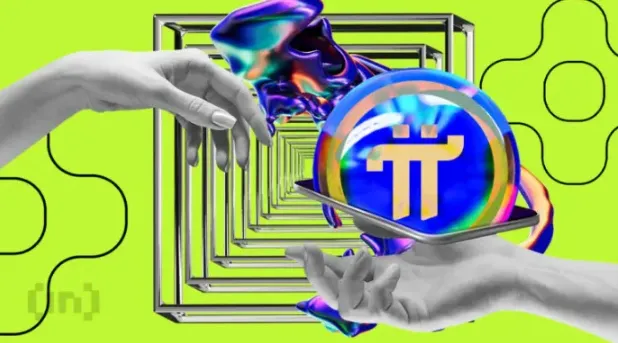Market
Federal and SEC Impact on Crypto Industry Examined


The interplay between federal monetary policies and regulatory decisions by the US Securities and Exchange Commission (SEC) continues to shape the cryptocurrency industry. As experts delve into the nuances of these impacts, significant shifts are observed in both market dynamics and institutional strategies.
Michael Saylor of MicroStrategy and Arthur Hayes, co-founder of BitMEX, provide insights into the potential impact on major cryptocurrencies such as Bitcoin (BTC) and Ethereum (ETH).
Future Predictions for the Crypto Market From Industry Titans
Michael Saylor, executive chairman and co-founder of MicroStrategy, projects a pivotal summer for the cryptocurrency sector. According to Saylor, the SEC will likely classify Ethereum as security.
Consequently, the commission will potentially deny the spot Ethereum ETF applications from several asset managers, including BlackRock. These predictions were shared during his presentation at the MicroStrategy World 2024 conference.
Saylor extends his forecast to other prominent cryptocurrencies such as BNB, Solana (SOL), XRP, and Cardano (ADA). He suggests they, too, will receive similar designations as unregistered securities. Saylor asserts that only Bitcoin (BTC) enjoys full institutional acceptance, epitomized as the “one universal” institutional-grade asset.
“None of them will be wrapped by a spot ETF, none of them will ever be accepted by Wall Street,” Saylor stated,
Read more: Ethereum ETF Explained: What It Is and How It Works
Meanwhile, the market’s anticipation for the SEC’s decision on spot Ethereum ETFs has dramatically shifted. Eric Balchunas, senior ETF analyst at Bloomberg Intelligence, said that the “odds of ETH ETF approval by May deadline are down to 35%.”
The pessimism also comes from the issuers themselves. Earlier in April, Jan van Eck, the founder and CEO of asset manager VanEck, shared skepticism regarding the SEC’s likelihood of approving spot Ethereum ETFs. His thoughts are noteworthy as his company and 21Shares are among the asset managers eagerly awaiting Ethereum ETF approval at the end of this month.
The situation is becoming more complex due to the ongoing legal battles between the SEC and Ethereum-based projects such as Uniswap and Consensys—MetaMask’s parent company. BeInCrypto reported that the SEC issued a Wells notice for those two companies.
Consensys filed a lawsuit against the SEC after receiving the notice. The lawsuit’s outcome will be crucial for companies dealing with ETH and related products.
How Federal Policies Influence Crypto Stability and Growth
As regulatory waters are navigated, the broader economic policies of the US Federal Reserve also play a crucial role in determining the liquidity and viability of cryptocurrencies. Arthur Hayes, co-founder of BitMEX, explores the effects of the Federal Reserve’s recent decision to slow its balance sheet reduction pace.
This action effectively introduces $35 billion monthly into the economy.
Concurrently, the Treasury’s issuance of additional short-term Treasury bills aims to bolster liquidity. This effort is further impacted by the Federal Deposit Insurance Corporation’s (FDIC) maneuvers to insure deposits after the collapse of Republic First Bank. These moves collectively seek to stabilize the financial environment by adding significant contingent liabilities to the system.
Hayes interprets these actions as likely to alleviate some financial pressures on cryptocurrencies, predicting a stabilization and gradual increase in Bitcoin prices. He foresees it to consolidate in the $60,000 to $70,000 range by August.
“While I don’t expect crypto to fully realize the recent US monetary announcements’ inflationary nature immediately, I expect prices to bottom, chop, and begin a slow grind higher,” Hayes wrote.
Read more: How to Protect Yourself From Inflation Using Cryptocurrency
Bitcoin’s price has plummeted for the past few days, reaching a low of $56,000. However, at the time of writing, Bitcoin has recovered. It is now trading at $59,345, representing an increase of 2.57% for the last 24 hours.
The crypto industry is currently at a crucial point with the ever-changing regulatory and monetary landscapes. The insights from Saylor and Hayes highlight the complex interdependencies and the potential for both challenges and opportunities ahead. Understanding these dynamics is essential for stakeholders aiming to navigate the uncertainties of this volatile market.
Disclaimer
In adherence to the Trust Project guidelines, BeInCrypto is committed to unbiased, transparent reporting. This news article aims to provide accurate, timely information. However, readers are advised to verify facts independently and consult with a professional before making any decisions based on this content. Please note that our Terms and Conditions, Privacy Policy, and Disclaimers have been updated.
Market
Despite an 18% Drop, XRP’s Exchange Supply Hits Lows—Bullish Setup Ahead?

Reason to trust

Strict editorial policy that focuses on accuracy, relevance, and impartiality
Created by industry experts and meticulously reviewed
The highest standards in reporting and publishing
Strict editorial policy that focuses on accuracy, relevance, and impartiality
Morbi pretium leo et nisl aliquam mollis. Quisque arcu lorem, ultricies quis pellentesque nec, ullamcorper eu odio.
XRP has been trading under pressure in recent weeks, losing much of the momentum it built during its late 2024 to early 2025 rally. After reaching highs above $3.40, the asset has experienced an 18.3% decline over the past month, reflecting broader market softness.
At the time of writing, XRP trades significantly below its peak at a price of $2.06, with subdued investor activity and falling market participation across both spot and derivatives markets.
Related Reading
XRP On-Chain Activity Slows, But Price Remains Relatively Stable
Amid XRP’s decline, a CryptoQuant analyst known as EgyHash has recently shared his analysis on the altcoin in a post titled, “XRP’s Market Paradox: With Ledger Activity Dipping 80%, Is a Rebound on the Horizon?”
According to EgyHash, XRP’s on-chain and futures market data presents a mixed picture—declining activity but resilience in price. EgyHash noted that XRP Ledger activity has fallen sharply since December, with the percentage of active addresses down by 80%.
Similar declines have been observed in the futures market, where open interest has dropped roughly 70% from its highs, and funding rates have occasionally turned negative.

He added that the Estimated Leverage Ratio, which gauges average user leverage by comparing open interest to coin reserves, has also dropped significantly.
Despite these indicators pointing to weakening momentum, the altcoin’s price has only declined about 35% from its peak. This is a milder correction compared to other assets such as Ethereum, which has fallen roughly 60% over the same period.
Additionally, the altcoin’s Exchange Reserve has continued to decline, reaching levels last observed in July 2023. Lower reserves typically suggest that fewer tokens are available for immediate sale, a factor that can help support prices during market downturns.

According to EgyHash, this trend, along with relatively stable pricing, could indicate growing long-term confidence in the asset.
Institutional Developments Could Strengthen Market Sentiment
While on-chain metrics remain a focus, institutional developments may also play a role in shaping XRP’s future trajectory. Hong Kong-based investment firm HashKey Capital recently announced the launch of the HashKey XRP Tracker Fund—the first XRP-focused investment vehicle in Asia.
Backed by Ripple as the anchor investor, the fund is expected to transition into an exchange-traded fund (ETF) in the future. The initiative is designed to attract more institutional capital into the XRP ecosystem.
HashKey Capital is launching Asia’s first XRP Tracker Fund—with @Ripple as an early investor.
This marks a major step in expanding institutional access to XRP, the third-largest token by market cap. 🧵👇
— HashKey Capital (@HashKey_Capital) April 18, 2025
HashKey Capital has also indicated that this collaboration with Ripple could lead to further projects, including tokenized investment products and decentralized finance (DeFi) solutions.
Related Reading
Vivien Wong, a partner at HashKey, emphasized the strategic value of integrating Ripple’s network with regulated investment infrastructure across Asia.
Although the altcoin faces near-term pressure, long-term developments, including decreasing exchange reserves and rising institutional interest, may support its recovery as the broader market stabilizes.
Featured image created with DALL-E, Chart from TradingView
Market
Matchain’s Petrix Barbosa Talks the Future of Digital Identity


In an engaging session during Paris Blockchain Week, BeInCrypto caught up with Petrix Barbosa, the innovative mind behind Matchain, a blockchain venture that’s reshaping how digital identity and data sovereignty are approached.
Barbosa, who transitioned from a successful career as a venture capitalist, where he managed investments across 250 projects, brings a wealth of experience and a unique perspective to the blockchain landscape. Petrix Barbosa’s insights reveal a compelling vision for the future of blockchain, focusing on user empowerment and innovative use of technology to solve enduring problems in digital identity and data management.
Petrix Barbosa Discusses Matchain and its Mission
Matchain is a layer 2 blockchain platform that primarily addresses the challenges of identity and data sovereignty. Our mission is to empower users by giving them control over their digital identities and data, thus ensuring that they’re the primary beneficiaries of their online presence.
Barbosa on His Pivot from Venture Capital
In my time as an investor, I witnessed many great ideas fail to reach their potential due to the lack of a substantial user base or poor market timing. This inspired me to transition from funding projects to creating a platform that not only serves my vision but also provides tangible solutions to widespread issues in the blockchain community—primarily, user engagement and application.
Matchain’s Innovations in the Area of Identity Sovereignty
Matchain introduces a novel approach to managing digital identity. Unlike traditional models where user data is siloed across various platforms, Matchain allows users to have a single digital identity that spans across both Web2 and Web3. This is crucial for enabling a seamless transition and interaction between these two worlds.
How Matchain Integrates Existing Web2 Infrastructure
Our platform acts as a bridge between the decentralized ecosystem of Web3 and the more traditional Web2 infrastructure. By allowing users to manage their digital identities across both platforms, we facilitate a smoother interaction that enhances user experience while maintaining high security and trust.
Future Developments From Matchain
Looking ahead, we aim to expand our user base significantly. Currently, we are backed by strategic partnerships, like the one with Paris Saint-Germain, which not only broadens our exposure but also integrates our technology into mainstream applications.
In the next two years, we plan to onboard millions of users, leveraging our innovative solutions to enhance their digital interactions.
Barbosa on Unique Challenges in Developing Matchain
The biggest challenge was shifting the focus from simply creating a blockchain solution to ensuring it was user-centric and capable of addressing real-world problems. This involved integrating AI to manage and analyze data effectively, ensuring that our platform could deliver personalized and contextually relevant experiences to users.
Matchain Over the Next Five Years
In five years, I envision Matchain at the forefront of blockchain technology, leading the charge in digital identity management and data sovereignty. Our platform will likely become a critical tool for users and companies looking to navigate the complexities of the digital age securely and efficiently.
Disclaimer
In compliance with the Trust Project guidelines, this opinion article presents the author’s perspective and may not necessarily reflect the views of BeInCrypto. BeInCrypto remains committed to transparent reporting and upholding the highest standards of journalism. Readers are advised to verify information independently and consult with a professional before making decisions based on this content. Please note that our Terms and Conditions, Privacy Policy, and Disclaimers have been updated.
Market
Base Launches Strong, But Content Coins Draw Doubt

Content Coins are a new trend gaining attention in the crypto space, especially on Base. They are positioned as digital content with value driven by culture and virality. Supporters see them as a new form of expression.
Critics say they’re just meme coins with a different name. Base is pushing the idea forward, hoping it helps the chain stand out from the rest.
Are Content Coins Really Different From Meme Coins?
Content coins are a new concept gaining traction within crypto communities, especially on Base chain. According to Base founder Jesse Pollak, a content coin “represents a single piece of content,” with the core idea being that the coin is the content and the content is the coin — no more, no less.
These tokens are often created in a specific context, either on platforms like Zora.
Essentially, creators design them to function as standalone pieces of digital content, driving the token’s value through cultural impact, virality, or meme-worthiness—rather than any utility or fundamental backing.

Despite the growing popularity of the term, not everyone is convinced. User Kash (@kashdhanda) dismissed the label, saying, “contentcoins are a silly name for memecoins”. He also pointed out that “memecoins are actually closer to financial content than they are to finance.”
David Tso (@davidtsocy), who works at Base, brings a more supportive spin, comparing content coins to “Instagram posts and TikToks that show their value in real time.”
Is Base Is For Everyone Just Another Meme Coin?
Base is for everyone was the first content coin officially launched and promoted by Base. It made an explosive debut, with a market cap nearing $18 million within its first few hours.
Shortly after its peak, the token plummeted nearly 75%. Since then, it has shown signs of recovery, with its market cap now hovering around $9.6 million.
The coin has gained significant traction in terms of activity, currently boasting nearly 21,000 holders, over 29,000 transactions in the last 24 hours, and a daily trading volume close to $9 million.

Base is using this momentum to push a broader narrative: that all content should live on-chain. Base is actively leveraging this philosophy, framing content coins as a new form of internet-native expression where each token represents a piece of digital culture stored permanently on the blockchain.
Yet, despite this push, Base is for everyone remains the only content coin to break out meaningfully—most others haven’t crossed the $100,000 market cap threshold. While the concept aims to separate itself from typical meme coins by embedding value in cultural relevance rather than pure speculation, many remain unconvinced.
Critics argue that content coins are merely meme coins in new packaging. Still, if the trend takes off, it could position Base to outperform other chains like Solana. It would do this by capturing this narrative and driving unique user activity to its ecosystem.
Disclaimer
In line with the Trust Project guidelines, this price analysis article is for informational purposes only and should not be considered financial or investment advice. BeInCrypto is committed to accurate, unbiased reporting, but market conditions are subject to change without notice. Always conduct your own research and consult with a professional before making any financial decisions. Please note that our Terms and Conditions, Privacy Policy, and Disclaimers have been updated.
-

 Altcoin24 hours ago
Altcoin24 hours agoHashKey Launches First XRP Tracker Fund With Ripple’s Backing
-

 Market23 hours ago
Market23 hours agoBitcoin Price Gears Up for Next Leg Higher—Upside Potential Builds
-

 Altcoin17 hours ago
Altcoin17 hours agoEthereum ETFs Record $32M Weekly Outflow; ETH Price Crash To $1.1K Imminent?
-

 Market9 hours ago
Market9 hours agoPi Network Roadmap Frustrates Users Over Missing Timeline
-

 Market8 hours ago
Market8 hours agoSolana (SOL) Price Rises 13% But Fails to Break $136 Resistance
-

 Market21 hours ago
Market21 hours ago100 Million Tokens Could Trigger Decline
-

 Market18 hours ago
Market18 hours agoCZ’s Plan to Streamline BNB Staking Could Boost DeFi
-

 Market24 hours ago
Market24 hours agoCircle Introduces On-Chain Refund Protocol to Strengthen USDC Payments






















